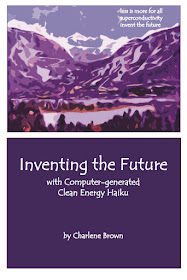1. Hotter, longer heatwaves: The intense heatwaves that hit southern Europe and the southern US and Mexico in July 2023 would have been "virtually impossible" without human-caused climate change. And these events are no longer rare. If global warming reaches 2C above the pre-industrial period these events are expected to happen every two to five years.
As well as happening more frequently, heatwaves are becoming longer and more intense in many places.
This can happen as a result of heat domes, which are areas of high pressure where hot air is pushed down and trapped in place, causing temperatures to soar over large areas. One theory suggests higher temperatures in the Arctic (which has warmed more than four times faster than the global average) are causing the jet stream to slow, increasing the likelihood of heat domes.
2. Longer droughts: Longer and more intense heatwaves can worsen droughts by drying out soil. This makes the air above warm up more quickly, leading to more intense heat. Increased demand for water from humans, especially farmers, in hot weather puts even more stress on the water supply.Climate change has made droughts at least 100 times more likely.
3. More fuel for wildfires: Climate change is making the weather conditions needed for wildfires to spread more likely. Extreme and long-lasting heat draws more and more moisture out of the ground and vegetation. These tinder-dry conditions provide fuel for fires, which can spread at an incredible speed, particularly if winds are strong.
Rising temperatures may also increase the likelihood of lightning in the world's northernmost forests, increasing the risk of fires. Canada experienced by far its worst wildfire season on record in 2023, with around 18 million hectares (45 million acres) burned.
Climate change more than doubled the likelihood of the extreme "fire weather" conditions in eastern Canada that allowed the fires to spread, Extreme wildfires are projected to become more frequent and intense in future across the globe. This is due to the combined effects of shifting land use and climate change.
4. More extreme rain: For every 1C rise in average temperature, the atmosphere can hold about 7% more moisture. The heavy rainfall was made as much as 50 times more likely by climate change, Globally, the frequency and intensity of heavy rainfall events has increased over most land regions due to human activity. And heavy precipitation will generally become more frequent and intense with further warming,
*Outline of an article by Mark Poynting and Esme Stallard, BBC News Climate & Science




















